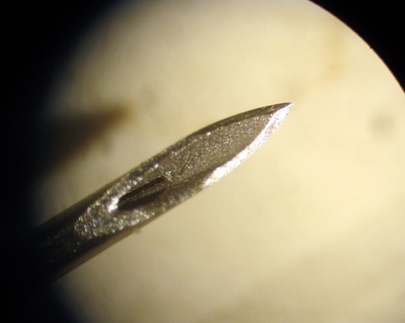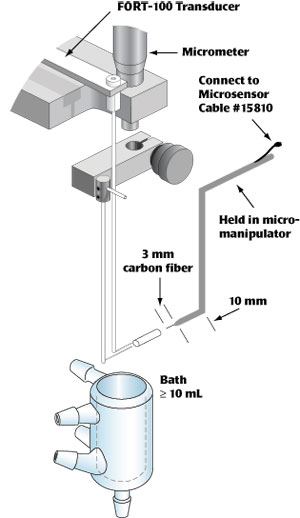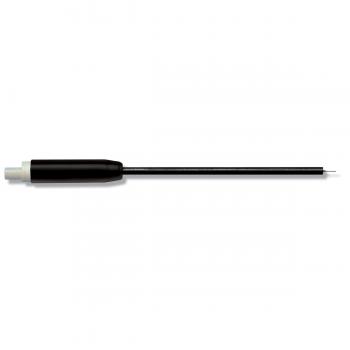ISO-HPO Hydrogen Peroxide Microsensors
WPI's hydrogen peroxide microsensors make it easy to measure H2O2 levels in biological samples.
- Overview
- Specifications
- Links
Direct quantitative measurements of hydrogen peroxide in biological samples.
Key Features
- Integrated reference electrode
- A robust inbuilt hydrogen peroxide sensor with a 100 µm tip size
- For use with Apollo1000, Apollo4000, TBR4100 and TBR1025
- Requires cable 91580 (sold separate)
- Package of 3
Benefits
- Response Time: < 5 s (90%)
- Detection Limit: 1 nM - 1 mM
- Drift: < 1.0 pA/min. (< 2 pA/min. for the L-Shaped)
- Sensitivity: 1 pA/nM
Applications
- Tissue/Microvessels detection of HPO
- L-shaped for investigations using tissue baths
- Hypodermic for simple tissue implantation
Despite this oxidant's well-known significance in biology, real-time measurements at low concentrations have proven challenging. With direct quantitative detection in biological samples in the near nM range, the hydrogen peroxide sensors created by WPI are intended to supplement existing high sensitivity fluorescence techniques.
A 2.0 mm stainless steel sensor called the ISO-HPO-2 has internal electrolyte that can be refilled (100042) and removable membrane sleeves (600012). It is intended for use in cell cultures and related procedures.
The ISO-HPO-100 is a hydrogen peroxide microsensor with a 100 µm tip diameter intended for use in tissues and related applications. In order to improve H2O2 detection, the design is based on a platinum wire sensing electrode coated with a special membrane.
These sensors use WPI's unique combination electrode technology, in which a single Faraday-shielded probe design houses both the hydrogen peroxide sensing element and a separate reference electrode. It has been demonstrated that this approach decreases overall sensor size while improving measurement performance.
WPI's hydrogen peroxide (H2O2) sensors are compatible with the free radical analyzers TBR4100 and TBR1025.
Hydrogen Peroxide in Biological Systems
In biological systems, hydrogen peroxide is created by controlled processes in low quantities that affect cell signaling. Inflammatory cells produce localized, concentrated levels of this oxidant to destroy infections at larger concentrations. Uncontrolled hydrogen peroxide production from the mitochondrial respiratory chain and enzymes like xanthine oxidase can happen as human disease progresses (Prof. Victor Darley-Usmar, Univ. of Alabama, personal communication).
Hypodermic Sheath-encased Hydrogen Peroxide Sensor
It is housed inside a hypodermic needle, the ISO-HPO-100H. The encased sensor and needle tip are shown in the image below as they appear under a microscope.

L-shaped Hydrogen Peroxide Sensor
The ISO-HPO-100-L is a special L-shaped hydrogen peroxide sensor made especially for use in tissue bath experiments and related applications (for example, take a look at WPI's MYOBATH). The sensor's design makes it easier to put the electrode inside the lumen of the tissue vessel under investigation.

You can also visit site of the manufacturer.


